We had a reader send us some photos of an odd submachine gun that he was looking for more information on. Well, it’s a new one to me – perhaps someone reading this knows more about the history of the piece?
It appears to be a copy of the Bergman MP18, and the magazine well is marked “Daniels Rapid-Fire Carbine” and the selector lever is not like a Bergmann, or other contemporary subgun I’m aware of. It is a registered, live machine gun, and the owner says it is dates 1929 – does anyone know more about these guns?

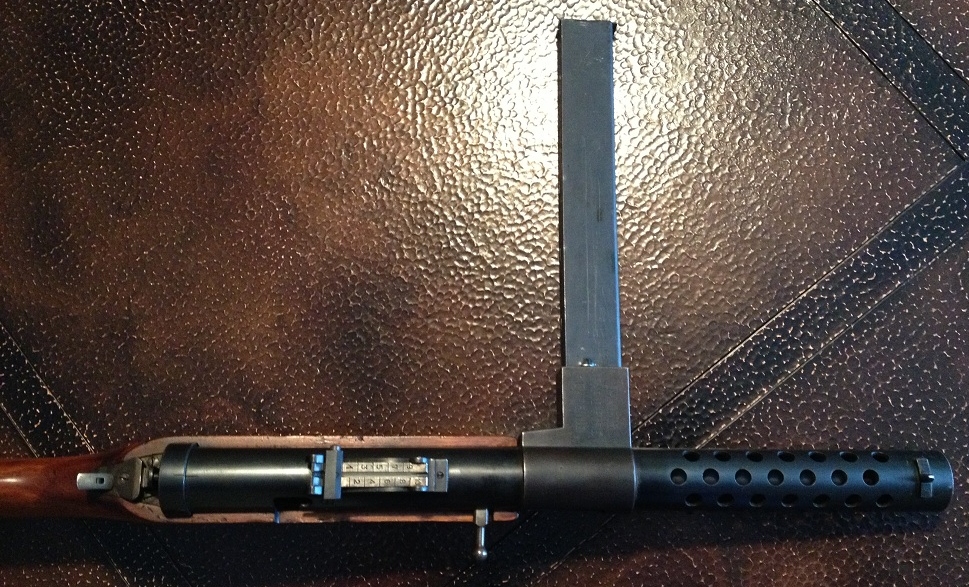
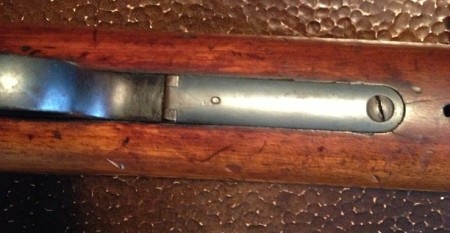
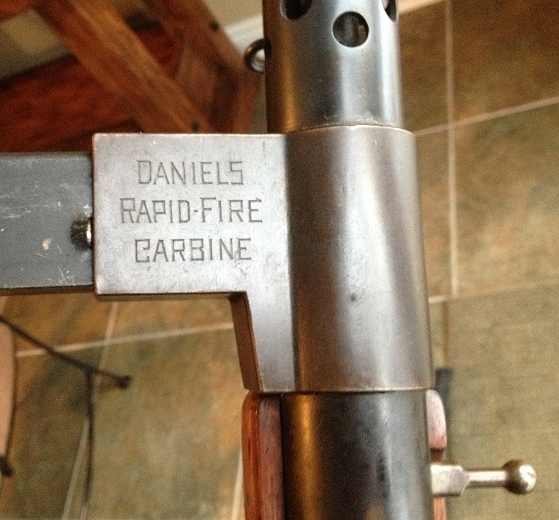
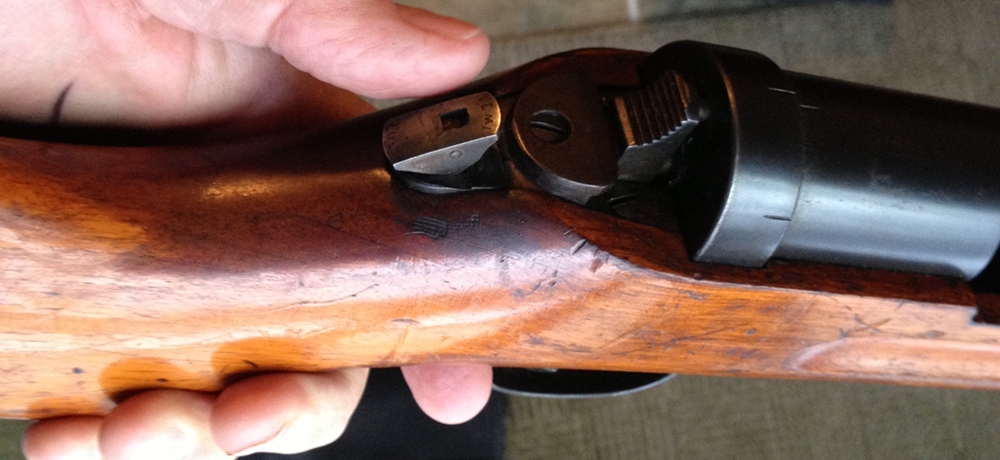
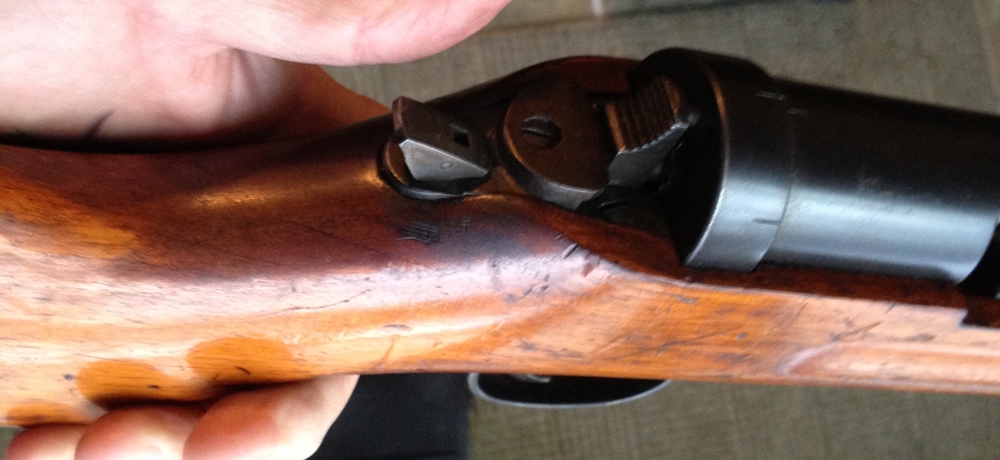
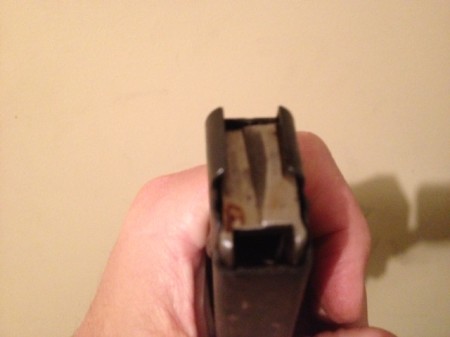
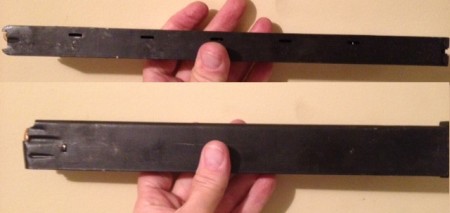


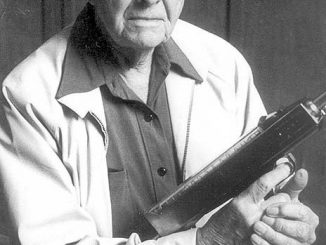
If it’s dated 1929, could it be a copy or partial copy of a Bergman MP28 rather than an MP18? I’m also wondering that if this gun was actually based on a Bergman, was it possible that an American company attempted to manufacture it under licence in this country with an eye towards possible law enforcement and military / para-military sales? To that end, the modified selector lever might have been incorporated as an adaptation or improvement over the original to suit a different end-user market.
Sorry, it should be “Bergmann”, not “Bergman”.
You probably meant ‘Sorry, it should be Schmeisser, not Bergmann at all’, by the time of MP.28,II. The MP.18,I was also Hugo Schmeisser’s design – it was just MANUFACTURED by the Bergmann, who also made Louis Schmeisser (Hugo father’s) semiautomatic pistols. Copies of MP18 started as early as 1919 with Bergmann himself manufacturing pirate copies in Switzerland, then the Chinese were making a nice copy, featuring a VERTICAL magazine bay (in a factory which launching was overseen by no less than Heinrich Vollmer, the man behind the VMP27, a direct forerunner of the Erma’s EMP).
Another very interesting SMG of the era often taken for a MP18 copy was the Estonian ‘Arsenal Tallin’ of 1923, which looks almost like MP18 from the outside, but inside is anything but the 18’s copy – that gun featured a progressive trigger mechanism (short pull – SEMI, long pull – FULL) as eary as 1923!
Other famous copy of Schmeisser burpguns (real Schmeissers, as opposed to MP38/40) was the British Lanchester.
This one looks pretty crude, and might indeed by a privately manufactured illicit copy of the C.G. Haenel-manufactured MP28 – as hinted at by the use of tangent sight and fireselector, two features that MP18 lacked at all – combined with a novel design of the fire selector itself and a completely different magazine, a staggered-row, two-position feed magazine, typical of Erma or Bergmann BMPs. It’s a pity no photos of the gun cracked open are shown – I wonder how this selector toggle cooperates with the trigger group.
Thanks for the input — just correcting for a typographical error in the correct spelling of “Bergmann”. Yes, I’m quite aware of the design origins per Hugo Schmeisser, but since it was manufactured by the Bergmann factory it generally seems to be named after the parent firm in most texts. I also read with great interest about the various MP18/I derivatives, such as the Chinese version ( made in the northern industrial city of Tsing Tao ) and the Swiss SIG Bergmann 1920. As best as I can tell, the SIG Bergmann 1920 in turn inspired the Estonian Tallinn 1923 and Finnish Suomi KP/-31. According to surviving records, the Tallinn seems to have been subject to extensive proofing trials — which it passed with very good results — prior to formal acceptance.
The Lanchester and Sterling SMG’s are generally acknowledged to be the direct descendants of the MP28/II in modified form, as are the Belgian Mitraillette 34 and Degtyarev PPD-34/38 and PPD-40 ( ancestors of the PPSh-41 ). Ironically, in the early years of World War II, most of the newer MP38 and MP40 SMG’s were allocated to the Wehrmacht on a priority basis, while the older but better-built MP28’s were given to the Waffen-SS, who were delighted to actually get a superior weapon for a change instead of having to make do with second-hand guns as previously experienced ( contrary to popular belief, most Waffen-SS units were often relegated to the back of the queue for new equipment, and it was only later in the war that they received higher priority for new weapons allocations ). The Waffen-SS troops also appreciated the fact that the side-mounted magazine of the MP28/II and later MP34/35 enabled them to fire more effectively from behind cover and in the prone position vis-a-vis the long bottom-mounted magazines of the MP38 and MP40.
Earl,
Thanks for reminding me – and It’s a tangent to this thread…
rudimentary sights either side of a gun would allow it to be fired with the mag on either side or pointing down, as the circumstances required.
please excuse the English commentary on this youtube – I think they must have used google translate, even the title should say forward “roll”
the movements are cool, despite the translation.
http://youtu.be/jILTBEvBqS8
I meant to refer to the Bergmann MP18, not the MP28.
Whoever this Daniels fellow was, it looks like he redesigned the magazine (and consequently the bolt and feed ramp) to a 2 position feed, probably to simplify production of the magazines.
That’s a good idea too.
Single feed double stack magazines suck.
To feed reliably they need stupidly stiff springs, which means that unless you have a loading tool your fingers will start bleeding after loading about 20 rounds.
Double feed mags are generally more reliable, more rugged, cheaper, and much easier to load.
If it was manufactured in Europe (including Britain), it would have had some sort of proof mark.
Big Al’s picked up on the dual feed position of the mag and the consequent broader feed (whatever the proper term is) on the bolt and broader feed ramp compared to the Bergmann.
The timeline is interesting, there were still four more years of alcohol prohibition left, with its accompanying gang activity – before the swap was made from alcohol prohibition to gun prohibition, and its accompanying gang activity,
I’m surprised that it didn’t prove popular.
BTW, I’ve been assuming that it is set up for 9mmP? rather than say .38 Super or .380 ACP?
apart from war trophy P08s and red 9 96s, were their many 9mmP guns in the US at that time? and was ammunition available?
If it’s in the USA, I would run a FOIA search on it. The goal would be finding out when and who filed the Form 1 or Form 2 on it. Perhaps it was registered in the 1968 amnesty, which would make such a search rather tough.
thanks for the responses guys. Yes it is set up for 9mmP. I’ll send Ian a couple more pictures of the magazine catch and the gun cracked open.
Bit late on this, but where’s the magazine catch?
Just thought I’d pass this along……a picture of one of these surfaced at machinegunboards.com….appeared to have been in a vintage LAPD photo…..
It’s in the 3rd pic in the thread…..next to 2 21 Thompsons……
http://www.machinegunboards.com/forums/index.php?showtopic=18164
Tried to edit my above post…..wasn’t an LAPD photo….it looks like these guns came from “Vincent Daniels”, a Chicago area importer/gunsmith/inventor that was implicated with the St. Valentines Day Massacre….
That would be a very interesting piece of history.
RichM, I have more details for you on this weapon, if you want to contact me use WorldInventory @ gmail.com (delete spaces).
Cheers
HANS
The magazine well is a copy of the Bergmann SIG M1920 as is the bolt handle both are fifferent than the MP18 and MP28
The SIG Bergmann even reached the United States, where it became implicated in one of the most notorious episodes of the “roaring twenties”. A Chicago gun dealer, Vincent Daniels, imported 7.65mm SIG Bergmann submachine guns which he modified in-house by fitting two-position fire-selector switches (giving automatic and single-fire) behind the end cap of the receiver. This fire selector arrangement was somewhat similar to the later Lanchester submachine gun developed in Britain. The magazine housings of these guns were etched with “DANIELS RAPID-FIRE CARBINE” and marketed under that name. These so-called Daniels carbines were sold, along with Thompson guns, to gunmen of Al Capone’s Chicago Outfit and “Bugs” Moran’s North Side Gang, during the bitter street war between these two rival gangs in the 1920s, which culminated with the infamous St. Valentin’s Day Massacre in February 1929. Daniels-modified SIG Bergmanns were not used in the massacre, but they were among the guns that were confiscated in the ensuing and highly-publicized police round-ups. It is not known how many Daniels-modified SIG Bergmanns were sold in the US, but likely very few.
http://firearms.96.lt/pages/SIG%20Model%201920.html